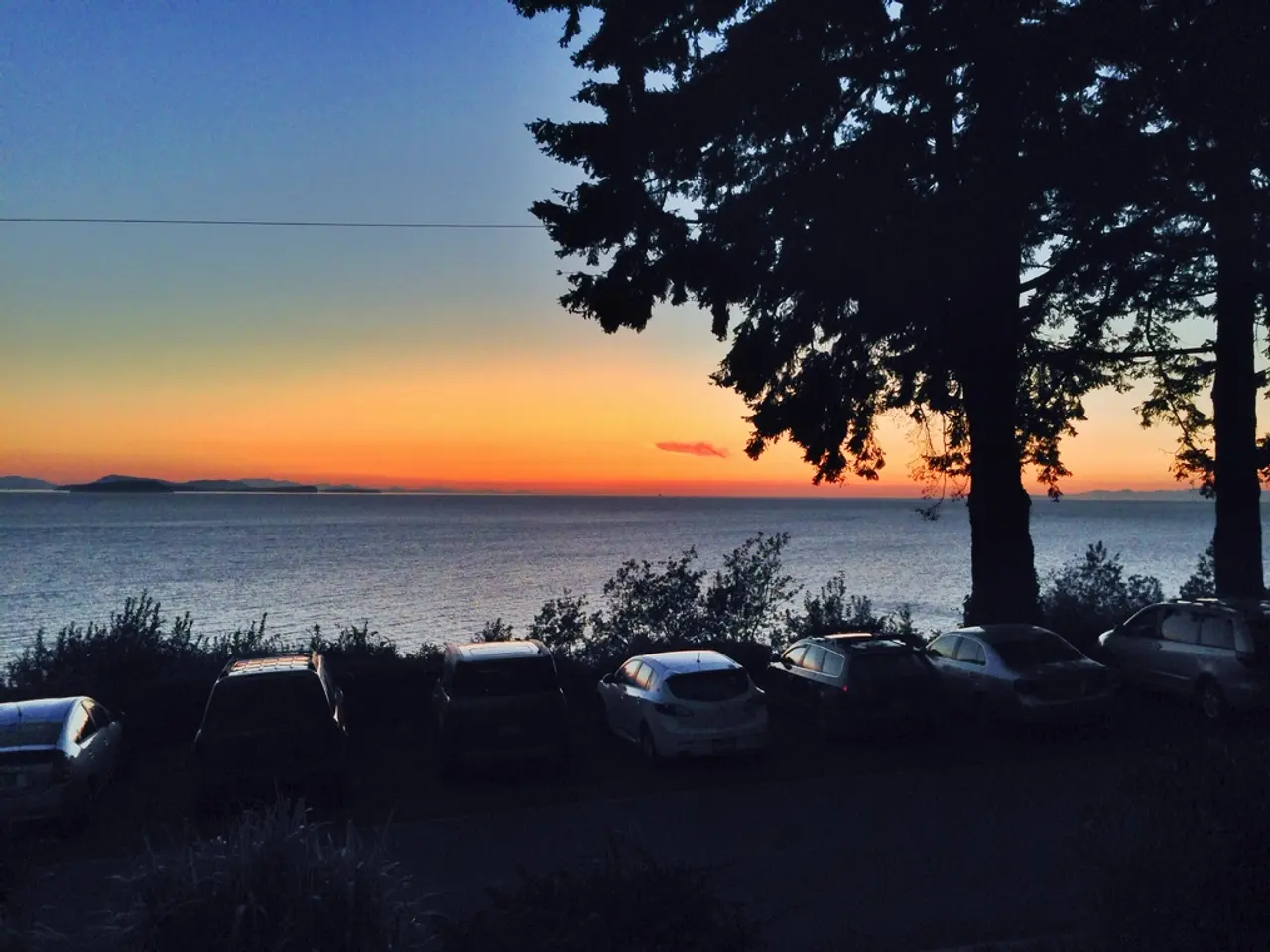Disturbing images illustrate the anticipated impacts of global warming in everyday settings
Atlas of the New World: A Visual Guide to the Future Impact of Climate Change
The photobook "Atlas of the New World," created by Edoardo Delille and Giulia Piermartiri, is a compelling blend of powerful photography and scientific data that illustrates the potential future impact of climate change on highly vulnerable regions. This project visually depicts how landscapes and communities might transform by 2100 due to global warming, highlighting the disproportionate effects on poorer countries that contribute minimally to greenhouse gas emissions but suffer severely from climate crises.
Delille and Piermartiri traveled to various locations, including California, Mont Blanc, Mozambique, China, and Russia, to make tangible the extreme environmental realities forecast for this century. Each chapter of the photobook focuses on six highly-climate vulnerable areas, employing a technique that marries scientific data with oneiric visuals.
In California, an image shows a man casually scanning his fridge as bright orange flames fill his kitchen, reflecting the projected increase in wildfires in the state by 2100. In Mont Blanc, flowery green meadows are superimposed onto snow, highlighting the rapid melting of glaciers at the site. In the Maldives, the main pollution comes from tourists, who have everything imported, including champagne, beer, Italian wine, and American products.
The photobook is accompanied by comparative data, primarily pulled from the United Nations Environment Programme, and essays authored by various experts. The visuals in each photograph are of landscapes that already experience similar weather to those forecast.
The series was shot using an analog process involving a battery-operated projector connected to a flash. Delille and Piermartiri spent a month or two in each location they covered, and the conversations they had with people on the ground were considered the real nucleus of their project.
In Mozambique, the photographers worked with an NGO focused on migration and spoke to farmers. They noted that the country is suffering from a climate crisis, with Africa contributing just 4% of global greenhouse gas emissions, and Mozambique, which has suffered two of the worst droughts in its history, contributing only 0.22%.
Delille and Piermartiri believe that their project serves as a manual, with the potential to make children immediately conscious about the problem of climate change and to pass the message on to them. They were motivated to start their project after witnessing global climate protests in September 2019, particularly in Italy where over one million people reportedly participated.
The photographers' work on the Maldives, titled "Diving Maldives" in 2019, was the starting point for the photobook "Atlas of the New World." Despite the Maldives' efforts to reduce its carbon footprint, with the use of electric motorbikes and solar panels, the country is at substantial risk due to rising sea levels, with some reports predicting that 80% of its land could become uninhabitable by 2050.
In conclusion, "Atlas of the New World" is a visually striking, science-based project that documents and forecasts the impact of climate change on vulnerable areas, emphasizing environmental injustice and aiming to educate and engage audiences about the urgent need for climate action.
[1] Delille, E., & Piermartiri, G. (2021). Atlas of the New World. Self-published. [2] Delille, E., & Piermartiri, G. (2021). Atlas of the New World: A Visual Guide to the Future Impact of Climate Change. [Exhibition Catalogue]. [3] Delille, E., & Piermartiri, G. (2019). Diving Maldives. [Photobook].
Read also:
- Kazakhstan's Deputy Prime Minister holds discussions on the prevailing circumstances in Almaty
- Announced: Initial Health Improvement Awards for Local Communities
- Elderly drivers could face a ban from the road if they don't pass a mandatory vision test under government plans, defended by the minister.
- Oskar's affluence: Examining his financial ascent and income origins





